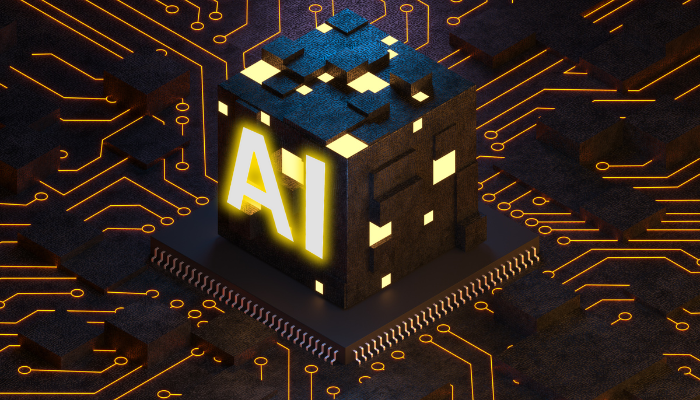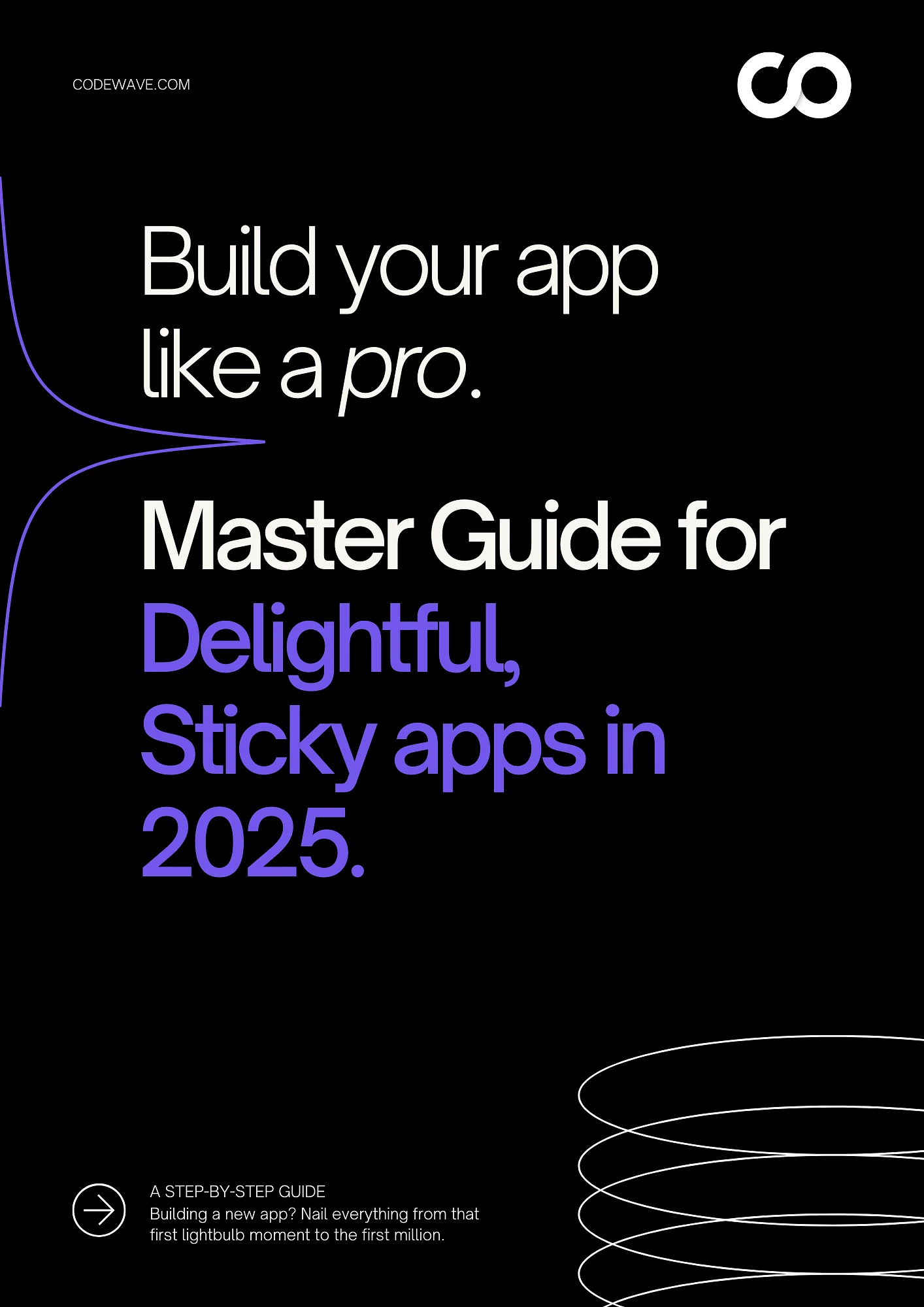Picture this: you’re running a business, and an AI system identifies a drop in customer engagement, finds the cause, and tweaks your strategy to fix it—all on its own. That’s what an agentic AI framework can do. With AI set to contribute $15.7 trillion to the global economy by 2030, it’s a technology you can’t afford to ignore.
Agentic AI works on its own, understanding your goals and solving challenges in real-time. From improving efficiency to identifying new opportunities, it’s a tool designed to make a real difference and help your business thrive.
This blog will walk you through what is agentic AI, how agentic AI frameworks work, their key components, and their impact on businesses. By the end, you’ll know how to use Agentic AI to drive results and take your business to the next level. Let’s begin.
Definition of Agentic AI: What Makes It Different?
When you hear “AI,” what comes to mind? Probably machines that follow orders. But agentic AI frameworks go beyond that.
Agentic systems don’t just process data—they make decisions on their own and adapt to the environment. In short, agentic artificial intelligence is designed to take action independently, solving problems and improving processes without waiting for a command.
Here’s how agentic frameworks compare to traditional AI, which still relies heavily on instructions and pre-defined tasks:
Here’s how agentic AI stands apart from traditional AI:
| Feature | Agentic AI | Traditional AI |
| Decision-making | Makes independent decisions based on goals | Follows pre-programmed instructions |
| Learning Ability | Continuously learns and adapts | Learns only from data fed to it |
| Adaptability | Adapts to new situations in real-time | Limited to predefined scenarios |
| Action Orientation | Takes actions to improve processes or goals | Focuses mainly on data analysis |
| Complexity Handling | Handles complex, dynamic environments | Works best with structured, simple data |
Now that you understand what sets agentic AI apart, let’s take a look at the key components that make it work.
The Building Blocks of Agentic AI: Glace at the Core Components
An agentic AI framework is like the brain of a smart, autonomous system. It works seamlessly by connecting key components that work together to make the AI smarter, faster, and more efficient.
Let’s break down what makes it tick.
1. Perception Module: The Eyes and Ears of the AI
This is where the AI gathers data from the world around it. It’s like how you use your senses to understand what’s happening around you.
- Sensor Integration: The AI collects data from cameras, microphones, or other devices, helping it form a complete picture.
- Data Processing: Raw data is cleaned and organized for easy use.
- Feature Extraction: The AI pulls out useful information like faces, objects, or voices to analyze.
This module makes sure the AI “sees” and “hears” accurately, which is key to making smart decisions.
2. Cognitive Module: The Brain of the AI
Now, the AI needs to make decisions based on the data it receives. This is where its “brain” kicks in.
- Goal Representation: The AI understands what it’s trying to achieve—whether that’s improving efficiency or solving a problem.
- Decision-Making: It decides the best way to meet those goals, just like you’d choose a route to get somewhere faster.
- Reasoning and Problem-Solving: It works through problems using logic and experience.
This is the core of the agentic AI framework where intelligence comes into play, making it a strategic powerhouse.
3. Action Module: The Hands and Feet of the AI
Once the AI has a plan, it needs to take action. This module is what makes that happen.
- Task Automation: The AI can handle repetitive tasks, saving time and effort.
- Device Control: It can operate machines or Agentic AI tools—like a robot arm or a drone.
- Execution Monitoring: It tracks its progress, adjusting if needed.
It’s all about turning ideas into action, and this module ensures things get done quickly and correctly.
4. Learning Module: The Self-Improver
This module helps the AI get better over time. Like you, it learns from its experiences.
- Reinforcement Learning: The AI figures out what works and what doesn’t through trial and error.
- Historical Analysis: It looks back at past decisions to improve its future ones.
- Continuous Optimization: It tweaks itself regularly to get better and better.
With this module, the AI becomes smarter with each use, improving the way it works and adapts to new challenges.
5. Collaboration Module: The Team Player
The AI isn’t working alone. This module helps it communicate and collaborate with humans and other systems.
- System Integration: It connects with tools like CRMs and ERPs to streamline workflows.
- User Interaction: It provides user-friendly interfaces to keep everyone on the same page.
This module ensures smooth teamwork between the AI, humans, and other technologies.
6. Security Module: The Protector
Protecting data and operations is critical, and this module keeps threats at bay.
- Threat Detection: AI identifies risks like malware or unauthorized access in real time.
- Data Encryption: It locks sensitive data to prevent breaches and misuse.
For businesses handling valuable data, this module is a must-have to protect against cyber threats.
Together, these components create a powerful agentic AI framework that adapts, learns, and delivers value for your business.
Agentic technology relies on key components like perception, decision-making, and action to function independently.
Now, let’s explore how these building blocks come together to create different types of agentic AI and how each type serves specific needs.
Types Of Agentic AI
Agentic AI systems can be categorized based on their capabilities, tasks, and how they interact with the environment. Understanding the different types helps businesses select the right solution for their needs. Let’s break down the key types of agentic AI:
Autonomous AI Agents
These agents are designed to make independent decisions without human intervention. They operate on predefined goals and learn from data in real-time to make optimal decisions. Examples include self-driving cars or smart robots in manufacturing environments. Autonomous AI agents continually adapt their strategies based on the feedback they receive from their surroundings.
Collaborative AI Agents
Collaborative agents work alongside human teams or other AI agents. They assist with decision-making or task execution but still rely on human input for complex or strategic tasks.
Examples include AI assistants like Siri or Google Assistant, which collaborate with users to answer questions, set reminders, or execute commands, but still need human interaction for tasks outside their scope.
Reactive AI Agents
Reactive agents don’t have memories of past actions. They respond to stimuli in real-time, making decisions based on current inputs without considering historical data. These types of agents are often used in simpler applications like chatbots or automated customer service systems, where responses are based on the immediate inquiry.
Adaptive AI Agents
Adaptive AI agents learn from past experiences and adapt to changing environments. They refine their decision-making processes over time, improving their actions based on feedback and new data.
Recommendation engines on platforms like Netflix or Amazon are examples of adaptive agents, continuously tweaking their recommendations based on user preferences and behaviors.
Generative AI Agents
Generative AI agents go beyond decision-making and start creating new data. They generate content, design solutions, or simulate environments. Generative Pre-trained Transformers (GPT) and other creative AI models like DALL·E for image generation or DeepMind’s AlphaFold for protein folding are examples where the AI generates novel outcomes, which can be applied in fields like research, media, and entertainment.
Understanding the different types of Agentic AI is just the beginning. Let’s take a closer look at the models that power these systems.
Agentic AI Models: The Core of Intelligent Decision-Making
Agentic AI models are the backbone of any intelligent agent. They define how the AI processes data, makes decisions, learns from experiences, and adapts to new environments. The power of agentic AI comes from the models that guide these actions.
In this section, we’ll explore various types of agentic AI models that are being used to create smarter, autonomous systems.
Reinforcement Learning Models
These models enable AI to learn from trial and error. The system explores its environment, performs actions, and receives feedback in the form of rewards or penalties. Over time, it learns which actions lead to the best results.
Generative Models
Generative models are designed to create new data. They can generate anything from text, images, to music based on patterns learned from existing datasets. These models are the foundation of generative AI systems like GPT (Generative Pretrained Transformers) and GANs (Generative Adversarial Networks).
Supervised Learning Models
Supervised learning models are used to train AI systems with labeled data. The system learns from input-output pairs to predict outcomes for new data. These models are ideal for tasks like classification, regression, and pattern recognition.
Unsupervised Learning Models
In unsupervised learning, the AI is tasked with finding hidden patterns or groupings in data without labeled outputs. It is great for clustering, anomaly detection, and dimensionality reduction.
Hybrid Model
Hybrid models combine aspects of reinforcement, supervised, and unsupervised learning to address more complex problems. These models are useful when the task requires a multi-faceted approach, like autonomous robots or personalized AI recommendations.
With the building blocks in place, let’s now look at the key features that make agentic AI so powerful.
Key Features of a Robust Agentic AI Framework
If you’re looking to level up your business with AI, agentic AI frameworks are a game-changer. These frameworks let you build intelligent Agentic systems that not only make decisions but also collaborate, learn, and adapt on their own.
Let’s dive into the key features that make these frameworks so powerful.
1. Pre-built Components and Abstractions for Easy Setup
You don’t have to start from scratch when you use an agentic AI framework. With pre-built modules and abstractions, you can quickly set up and customize the system to suit your needs. This means less time spent coding and more time focusing on what matters: solving your business challenges.
2. Tool Integration for Real-time Data and External Tool Interaction
Setting up AI systems can be a headache, but agentic AI frameworks have pre-built components to make things way easier. Instead of starting from scratch, you can plug these modules into your system and get up and running quickly. This means you can focus on what really matters—customizing the AI to your business needs—without wasting time on tedious setup.
3. Memory Management for Long-term Task Execution
What if your AI could remember past interactions and use them to improve its performance? That’s exactly what memory management does in an agentic AI framework. It ensures continuity in long-term tasks, like a chatbot recalling customer preferences to provide customized Agentic AI solutions. This isn’t just about convenience; it’s about creating smarter systems that feel human.
4. Multi-Agent Collaboration Supporting Complex Projects
No business operates in isolation, and the same goes for your Agentic AI agents. Agentic AI frameworks enable multiple agents to collaborate, dividing and conquering tasks effortlessly. Picture one agent handling customer service inquiries while another processes data for insights. Together, they work like a dream team, boosting productivity and accuracy.
5. Planning and Reasoning for Adaptive Workflows
Your AI should do more than follow static rules—it should adapt. With planning and reasoning capabilities, an agentic artificial intelligence framework can evaluate situations, make predictions, and pivot strategies on the fly. For example, a logistics agent can reroute deliveries if there’s a traffic jam, ensuring packages arrive on time. It’s the kind of agility every business needs.
6. Personalized Decision-Making for Enhanced Customer Experiences
Ever gotten a product recommendation that felt spot on? That’s personalized decision-making in action. By analyzing user behavior and preferences, agentic AI frameworks help you deliver experiences that resonate. From customized shopping suggestions to tailored support, this feature helps turn casual users into loyal customers.
7. Self-Learning for Continuous Improvement
No one likes systems that stay stuck in their ways. An agentic AI framework with self-learning capabilities adapts and evolves based on feedback and outcomes. Let’s say your marketing tool analyzes campaign data and tweaks its approach to get better results next time. This kind of improvement saves you time and keeps your strategies sharp.
8. Context-Aware Interactions for Real-world Applications
Context is everything. Agentic AI frameworks excel at understanding the bigger picture and responding accordingly. Take healthcare, for example: an AI assistant can prioritize patients based on urgency, ensuring critical cases get attention first. It’s this kind of smart adaptability that sets these systems apart.
Now that we’ve covered the key features, let’s take a look at how agentic AI works.
Real-World Applications of Agentic AI Frameworks
Have you ever wondered how businesses are using AI to solve problems that once seemed impossible? Agentic AI frameworks are driving innovations across industries, creating smarter systems that don’t just follow instructions but act independently and adapt intelligently.
Let’s dive into some specific Agentic AI applications transforming sectors today.
1. Autonomous Vehicles: Smarter Driving Decisions
Agentic AI frameworks power self-driving cars by helping them process real-time data, predict outcomes, and react instantly. Whether avoiding sudden obstacles or finding the fastest route, these frameworks make navigation safer and smoother. Companies like Tesla and Waymo rely on this tech to make autonomous vehicles a reality.
2. Healthcare: Personalized Patient Care
In healthcare, AI is stepping up big time. Agentic AI frameworks analyze patient data, predict health outcomes, and even suggest treatment plans. Startups like Tempus are using these frameworks to create tailored cancer treatments, giving patients more precise and effective options. It’s not just about automation; it’s about delivering better care.
3. Customer Service: Instant, Human-Like Help
Tired of waiting on hold for customer support? With agentic AI, businesses can offer 24/7 service that feels human. These frameworks handle complex customer inquiries and only escalate when absolutely necessary. Platforms like Zendesk and Salesforce already use this to improve customer experiences. For you, this could mean happier customers and lower costs.
4. Retail: Smarter Shopping Experiences
Retailers use agentic AI frameworks to predict demand and keep shelves stocked. But it doesn’t stop there. These systems also create personalized shopping experiences, recommending products you’re more likely to love. Ever noticed how Amazon knows exactly what you need before you do? That’s agentic AI at work, optimizing both inventory and customer satisfaction.
5. Finance: Fighting Fraud in Real-Time
Every second counts when detecting fraud. That’s where agentic AI frameworks shine. They scan massive amounts of data in real-time, identifying suspicious transactions and flagging them instantly. Companies like Visa and PayPal rely on this tech to secure billions of dollars in transactions daily. It’s not just efficient—it’s essential.
6. Manufacturing: Preventing Downtime and Ensuring Quality
Agentic AI frameworks help manufacturers avoid costly breakdowns by predicting equipment issues before they happen. They also maintain consistent product quality. For example, GE uses Agentic AI technology to streamline production and minimize disruptions, saving time and money.
7. Education: Customized Learning Paths
Think about how much easier learning would be if lessons were tailored to your pace and style. With agentic AI frameworks, educational platforms like Duolingo are creating customized learning paths. These systems adapt in real-time to track your progress, suggest exercises, and even predict areas where you might struggle. It’s education designed just for you.
8. Energy: Smarter Power Usage
Energy companies use agentic AI frameworks to predict demand and adjust supply, making systems more efficient. Tesla integrates these frameworks into renewable energy solutions, reducing waste and optimizing resource usage. It’s a smarter way to manage energy.
As we’ve seen, agentic AI is making waves. Now, let’s take a closer look at the frameworks that make it all possible.
Building Smart AI Systems: Top Agentic Frameworks You Need to Know
Building a smart AI system doesn’t have to be complicated. With the right agentic AI libraries, frameworks, you can automate tasks, improve decision-making, and make your system more adaptable.
Let’s break down some of the top frameworks that could help you get started:
1. LangChain
LangChain is an open-source Agentic AI framework. It is perfect if you want to create powerful language model apps. It helps you chain together prompts and responses, making it easier to build AI systems that can:
- Break Down Complex Tasks: LangChain splits up big tasks into smaller, easier steps.
- Use External Knowledge: It pulls in info from other sources, helping your AI make smarter decisions.
- Improve Over Time: It refines its responses based on feedback, so it gets better as it learns.
2. Microsoft AutoGen
Microsoft AutoGen is one of the best Agentic AI frameworks. It is designed to help you create autonomous AI agents that work together. It’s all about cooperation and delegation:
- Multi-Agent Coordination: You can manage several AI agents, ensuring they all work toward a common goal.
- Task Delegation: Assign tasks to the best-suited agent, making sure things get done the right way.
- Shared Knowledge: Agents share information and learn from each other, which keeps them smarter as they work.
3. CrewAI
CrewAI is another open-source Agentic AI framework built for creating role-based AI agents that work like a team. Every agent has its role, making the whole system more efficient:
- Role-Based Setup: Each agent has a specific role, like being an expert, generalist, or creative thinker.
- Adapts to Changes: CrewAI can change tasks and roles if the situation calls for it.
- Collaborative Problem-Solving: Agents team up to solve complex problems, boosting efficiency.
4. Hugging Face Transformers Agents 2.0
This framework is all about security and real-time interaction. It lets you build agents that can securely communicate and perform tasks:
- Secure Execution: Keeps your data safe and shields your system from threats.
- Real-Time Communication: Agents can talk to each other and collaborate instantly.
- Customizable Skills: You can build agents with unique abilities and personalities to fit your needs.
5. Google AI Test Kitchen
Google AI Test Kitchen lets you experiment with advanced Agentic AI models and customize your agents. It’s perfect for playing around with new ideas:
- Understanding Language: Your agents can better understand and respond to human speech.
- Context Awareness: They remember past conversations to give more relevant answers.
- Creative Text: Google AI can even help generate creative pieces like poems, scripts, or music.
Now that we’ve covered the top frameworks, let’s look at how you can start building your own agentic AI systems.
Developing Agentic AI Systems: A Simple Guide to Building Smarter AI Frameworks
Building an agentic AI framework is all about making AI that can understand, learn, and take action on its own. It’s not just about making things work—it’s about making things work smartly. If you’re looking to build an AI system for your business, here’s how you can do it step-by-step.
1. Data Collection and Preprocessing
Before anything else, you need good data. Without quality data, your AI won’t be able to make smart decisions.
- Gathering Data: You need data to teach your AI. This could be anything from user data to environmental data or even transactional info. For example, if you’re building a chatbot, you’d start by collecting past conversations.
- Cleaning Data: Raw data is often messy. It might have missing pieces or errors. So, you clean it up, making sure your AI gets only the best, most accurate information to learn from.
Data smart, and smarter!
Codewave’s data strategy and analytics service helps you gather, clean, and transform your data into the perfect fuel for your AI engine. Get started today and see the difference clean data makes!
2. Goal Representation and Planning
Now that your AI has data, it needs to know what it’s trying to do. That’s where goals come in.
- Defining Objectives: What’s the point of all this? Whether it’s improving customer service or optimizing inventory, your AI needs a clear goal.
- Making a Plan: Once your AI knows the goal, it creates a plan. For instance, if it’s a delivery robot, it needs a plan to get from one place to another while avoiding obstacles. A plan ensures your AI knows the best way to get things done.
3. Decision-Making
Now comes the fun part: decisions. Your AI has to figure out what to do next based on the information it has.
- Evaluating Options: The AI looks at all the choices it can make. For example, should it respond to a customer query with a suggestion or a detailed answer? It weighs the options.
- Making the Choice: After looking at all the possibilities, the AI picks the best one based on what’s most effective. It’s like choosing the best route on a map—it takes into account traffic, the weather, and the final destination.
4. Action Execution and Integration with Environments
The decision’s made, now it’s time to take action. But action is not just about doing—it’s about interacting with the environment.
- Executing Actions: Your AI now takes the necessary action. In an autonomous car, it could mean steering or braking.
- Adapting to the Environment: AI has to deal with real-time changes. A delivery robot, for example, might need to adjust its path if something unexpected shows up in its way. The AI constantly adapts to whatever’s happening around it.
5. Learning from Feedback and Adapting
Once the action is done, your AI learns from the results. It gets feedback, which helps it get better.
- Receiving Feedback: Whether it’s a “thumbs-up” from a user or sensor data showing a change in conditions, your AI takes in all the feedback to assess how well it did.
- Improving: Based on this feedback, your AI learns how to adjust its actions for the next time. Over time, it gets smarter and more efficient, just like a person learning from their mistakes.
6. Optimizing Performance
Once your AI is up and running, you need to keep improving it.
- Tuning and Refining: You might adjust settings to make your AI faster or more accurate. For example, fine-tuning an AI that answers customer questions could mean adjusting the algorithms to improve its accuracy.
- Scaling: As your AI grows, it must handle more tasks and data. The right agentic AI platform ensures that your system scales without issues, maintaining consistent performance across larger datasets and complex tasks.
Ready to scale your AI effortlessly?
With Codewave’s infrastructure development services, we ensure your AI grows smoothly without a hitch. From seamless cloud solutions to optimized systems, we build the foundation for your AI to handle increased tasks and data.
7. Ethical Considerations and Safety
Finally, building a smart AI comes with responsibility. You need to ensure that it’s safe, secure, and ethical.
- Avoiding Bias: You need to make sure your AI doesn’t develop biased habits, especially if it’s using data that could be skewed.
- Ensuring Privacy and Security: Your AI needs to protect user data and avoid any security risks. By setting up strict safety protocols, you ensure the system operates securely and ethically.
Now that you know how to build an agentic AI system, let’s look at the challenges you might face along the way.
Overcoming Key Challenges in Building Agentic AI Systems
Building an agentic AI framework can be exciting, but it comes with its fair share of challenges. Let’s break down some of the biggest hurdles you might face and how to tackle them.
1. Complexity Management
Managing complex systems can quickly get overwhelming. With multiple components working together, it’s crucial to keep things organized.
How to Tackle It:
- Break the system into smaller, manageable parts.
- Use modular designs for flexibility and scalability.
- Regularly test and integrate new updates.
2. Ethical Concerns: Bias & Transparency
Bias in AI decisions can damage trust and credibility. Transparency is key, and you need to make sure your agentic AI framework is fair.
How to Tackle It:
- Use diverse and representative data sets to avoid bias.
- Ensure the AI’s decision-making process is explainable and traceable.
- Regularly audit for fairness and transparency.
3. Data Security
AI systems process vast amounts of data, which can be a target for cyber threats. Protecting user data is non-negotiable.
How to Tackle It:
- Encrypt data during storage and transmission.
- Conduct regular security audits.
- Implement fail-safes to ensure safe operation.
Want to make sure your AI is bulletproof?
With Codewave’s penetration and vulnerability testing, we identify and fix security flaws before they become threats. Protect your AI from risks and ensure it runs safely and ethically.
4. Resource Intensity
AI systems require significant computational power, which can be costly and resource-intensive.
How to Tackle It:
- Use cloud solutions to scale as needed.
- Optimize Agentic AI models for efficiency.
- Consider edge computing to reduce the load.
5. Keeping Up with AI Advances
The AI field evolves quickly, and staying updated is essential to remain competitive.
How to Tackle It:
- Keep learning and stay engaged with the AI community.
- Regularly update your system to integrate new advancements.
- Build flexible frameworks that can evolve over time.
By understanding and addressing these challenges, you’ll be able to build an agentic AI framework that’s both efficient and ethical.
You need an AI that evolves with your business.
Codewave crafts tailored GenAI solutions that grow and adapt to your needs. Let’s build smart, flexible systems that keep your business ahead of the curve.
Let’s wrap things up and highlight the key takeaways.
Conclusion
“AI is not about replacing humans, it’s about enhancing human potential.” – Satya Nadella
In this blog, we’ve seen how agentic AI frameworks can help businesses boost efficiency, make better decisions, and automate tasks. But, there are challenges too, like handling complexity, addressing ethical concerns, and ensuring data security.
The agentic AI market is expected to reach $47.1. billion by 2030. That’s a huge growth, and it shows how important these frameworks will be in the future.
Key Takeaways:
- Agentic AI has huge potential to help businesses grow and innovate.
- But, businesses need to tackle challenges like complexity, ethics, and security to make it work.
- The future of agentic AI frameworks is exciting. Advances in multi-agent systems and real-time collaboration are key to making this happen.
At Codewave, we know how powerful agentic AI can be in transforming your business. Our team is skilled in agentic AI development, creating custom AI and machine learning solutions that harness the potential of these frameworks. We can help you build intelligent, scalable systems tailored to your needs.
Are you ready to take your business to the next level with agentic AI services? Reach out to us today, and we’ll show you how we can help you implement these advanced solutions and drive growth. AI & Machine Learning Development.
Also an interesting read: Generative AI for Product Development: Fueling Faster, Smarter Innovation
Codewave is a UX first design thinking & digital transformation services company, designing & engineering innovative mobile apps, cloud, & edge solutions.







